12 Search Results for livebinders
August 22, 2016
by Carole Zangari -
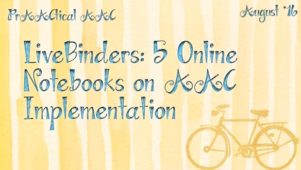
At the ISAAC 2016 conference in Toronto, I had the opportunity to talk about using technology to share information with families, colleagues, and pre-professionals. LiveBinders, is one of the tools that were discussed both in the pre-conference session with Chris Bugaj and in my seminar on pre-service AAC education. LiveBinders are digital notebooks that make it easy to collect, curate, and share information. We’ve been writing about this tool for the past four years, but there is new material being created all the time. Here are some AAC-related LiveBinders that I’ve been exploring. AAC by Jill Beall/Region 7 ABCs of AAC (Preschool AAC) by D. McLauchlin Literacy and AAC/Balanced Literacy by Deanna Wagner TAAT 2015 by Janice Reese Visuals for ASD by Penelope Arp For more information on LiveBinders and features that you may not know about, check out their tutorials and blog. Do you make or use LiveBinders? We’d... [Read More...]
June 1, 2012
by Robin Parker -
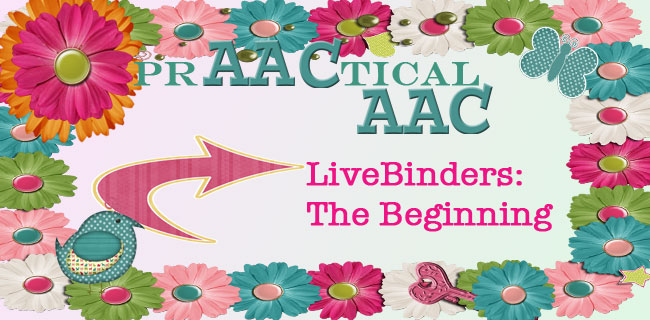
We have always started our collaborative projects with a retreat (usually a day at the beach or park). The retreat usually ends with a project and a plan to meet again. Following the retreat that inspired PrAACtical AAC, we were spending hours upon hours on the computer searching We were using pen and paper to write down urls to sites we wanted to share. We couldn’t believe the great information that was available. So when Carole told me to sit down and said “you have to look at what I found, it’s called LiveBinders“. I can still remember the exact moment. It was like on T.V….. the sun started shining through the window of my living room and music started playing. We couldn’t believe there was a site that was easy to use, would organize all the work we had done, let us look at and use other binders,... [Read More...]
January 21, 2019
by Carole Zangari -
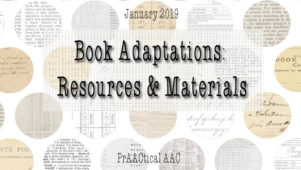
This is an updated version of a post originally authored by Dr. Robin Parker in 2013. We hope you find something of value in the resources that were shared. ::::::::::::::::::::::::::::::::::::::::::::::::::::::::::::::::::::::::::::::::::::::::::::::::::::::::::::::::::::::::::: To integrate reading and writing into communication and language learning we need to have lots of books that are easily accessible. Books should be accessible physically as well as through content and interest. This holds true for ALL learners even those that don’t like books but do like…… wheels. We have made literacy accessible for a young girl who only liked elevators, and a boy who only liked balls, and a young adult who liked Barney books but not much else. It holds true for ALL disabilities and ALL levels of reading and writing. Today, we share resources for making and using adapted books to make literacy more accessible. Check out these awesome resources for making your own adapted books... [Read More...]
August 28, 2016
by Carole Zangari -
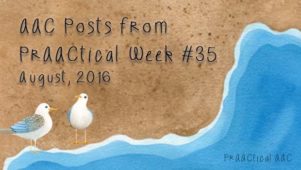
Here are a couple of AAC posts you may have missed. Monday: LiveBinders: 5 Online Notebooks on AAC Implementation Wednesday: Video of the Week: AAC Around the World with the 2016 ISAAC Film Festival
August 15, 2014
by Carole Zangari -
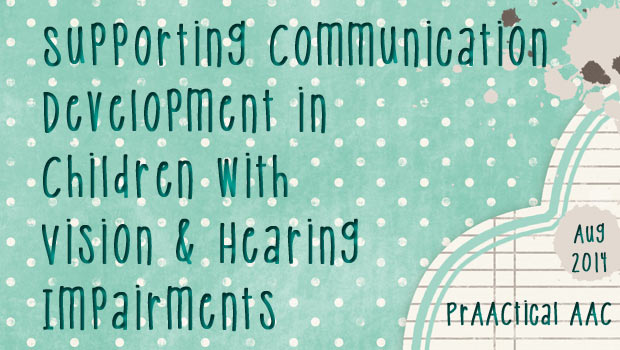
If you are new to working with young children who have both hearing and vision loss, this resource is for you. It is challenging it to complete meaningful assessments and to use those data to design effective interventions. This resource guide, edited by Dr. Charity Rowland, has wonderfully prAACtical information. In addition to the general content, there is specific information for SLPs, special educators, psychologists, and families. https://www.livebinders.com/media/get/NTEzMDI3OA==
March 24, 2014
by Robin Parker -
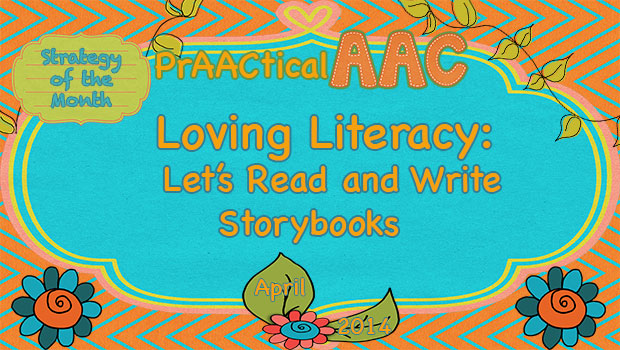
Literacy instruction involves lots of reading and writing. Last week, Carole discussed using storybook reading and the RAAP (Read, Ask, Answer, Prompt) strategy by Drs. Cathy Binger and Jennifer Kent-Walsh to teach communication and literacy. To use storybooks with all learners we need to have lots of books that are easily accessible. Books need to be accessible physically as well as through content and interest. It is lucky that with all of today’s on-line resources there is an abundance of ways to obtain as well as make and write storybooks. All learners can and should be be involved in both the reading and writing process. Not only do literacy skills improve but so do communication skills. Involving Learners in the Storybook Process Reader & Writer Vocabulary- Facilitate involvement by using reader and writer vocabulary. Refer to learners as “readers”, “authors”, “editors”, “publishers”, “critics”, etc. When you are treated and referred... [Read More...]
September 28, 2013
by Robin Parker -
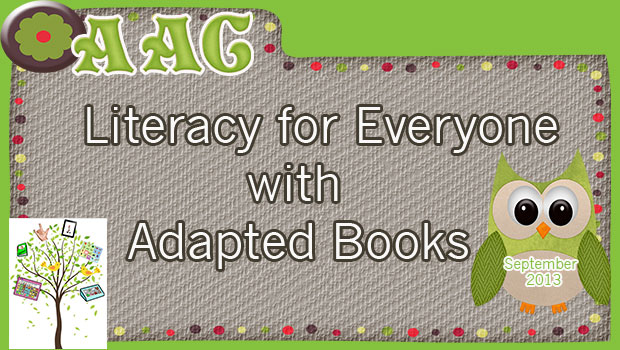
To integrate reading and writing into communication & language learning we need to have lots of books that are easily accessible. Books should be accessible physically as well as through content and interest. This holds true for ALL learners even those that don’t like books but do like…… wheels. We have made literacy accessible for a young girl who only liked elevators, and a boy who only liked balls, and a young adult who liked Barney books but not much else. It holds true for ALL disabilities, and ALL levels of reading and writing. For our final September Literacy Strategy of the Month, we wanted to share the abundance of resources for making adapted books. Because when we have great adapted books, literacy is more accessible. Check out these awesome resources for making your own adapted books and for printing out already created adapted books and lessons. We love early... [Read More...]
August 19, 2013
by Carole Zangari -

In some of our posts, we talked about using QR (Quick Response) codes as a way to share information. If you are new to QR codes, they are like bar codes in that you scan them with some kind of device (like a smart phone or tablet) that has software or an app that reads the code. Then what? Then it takes you to whatever the author wanted you to see or hear. For example, a QR code on an SGD in a loan library might take you to a quick start tutorial on the manufacturer’s website. A QR code on a handout might take you an electronic copy of that handout that is stored on someone’s website or a cloud service, like DropBox or Google Docs/Drive. A QR code on the student’s picture card ring might take you to an audio recording of directions for how to complete a... [Read More...]
October 20, 2012
by Carole Zangari -
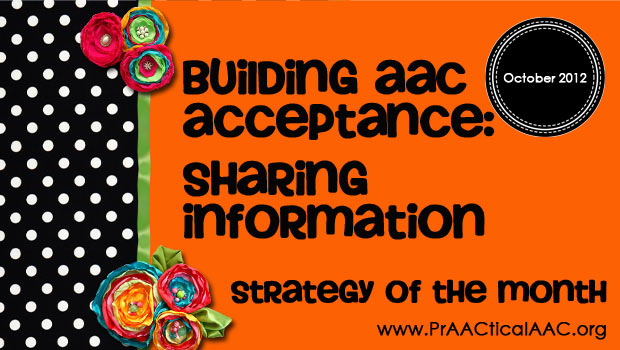
While there are certainly attitudinal barriers to AAC, it’s also true that sometimes the people we are trying to influence just need more information. Sounds simple, right? Not exactly. Especially when we consider these factors. Adult learners prefer to chart their own course to learning new things rather than have others lay that out for them. Our behaviors are most likely to change when we discover solutions for ourselves, as opposed to following directions that others give to us. We have a limited amount of time to guide others to the information they need. Here are some things that have worked for us. Develop a bank of educational materials that pertain to the topics that you face most often in your clinical work. Create resource files for general topics, such as the empirically-supported benefits of AAC, and specific topics, such as the evidence base for using SGDs with individuals who... [Read More...]
July 7, 2012
by Carole Zangari -
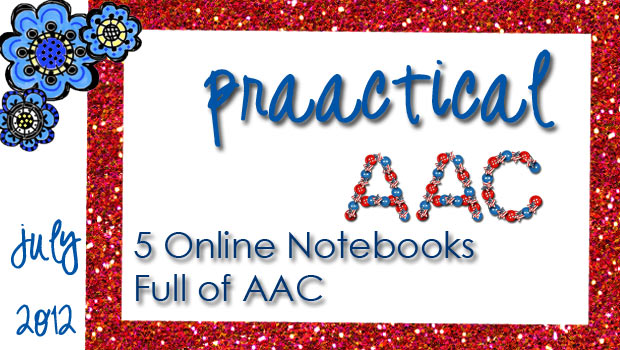
I have a real love-hate relationship with LiveBinders. The impatient part of me struggles with its quirky interface, but I keep coming back because of the wealth of resources and helpful site administrators. Here are some of the AAC-related binders we use most often. – General AAC Resources by Janice Reese AAC & Music by Deanna Wagner Social Scripts for People who use AAC by Caroline Musselwhite Our binder on Building Communication Opportunities for People who use AAC Our binder on Choice Boards –









